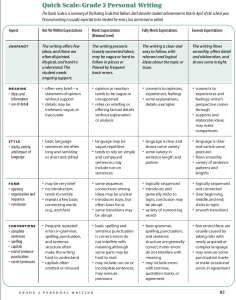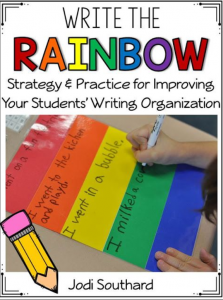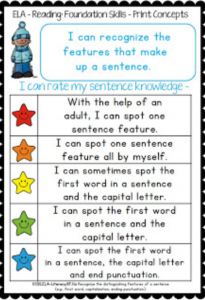Critical reflection #1
One project that I would love to try is to have the students write book reviews for the books they read. I will explain the learning intention and expectations to the students. The student will know that they will be learning how to write book reviews, and we will be posting their book reviews on tweeter. The students in my classroom are fascinated by technologies. Thus, they will be excited to hear that we might be able to tag some of the book authors on tweeter, and the authors might reply to their comments.
This project will assess students’ understanding of a certain genre, and their abilities to make constructive feedbacks for each other. As Gear (2015) mentions in the book Reading Power, Revised and Expanded, this project will be great for differentiated instruction because it is personal, open-ended, and self-reflective. This project uses gradual release of responsibility (Brownlie and Schnellert, 2009), which helps the students to scaffold their learning process.
We will first share some ideas about a certain book in informal ways, and I will record students’ responses on the whiteboard. Then, we will find out how to give more constructive feedbacks the next class. I might choose some online book reviews or restaurant reviews, and ask the students questions such as “does this review make sense?” “how to make it clear?” “how to make this review more informative or helpful?” This could help the students explore what are useful feedbacks look like.
We then can start to explore how to make a constructive book review by using various sources.
– This resource can be used to show the students what should a good book review look like and how to begin one: https://www.mensaforkids.org/teach/lesson-plans/book-review-guide/
– This resource is good for “How to write a book review” with pre-instructional planning, during instruction, and post instructional for teachers: https://www.scholastic.com/teachers/lesson-plans/teaching-content/book-reviews-online-and-beyond/
We will create a rubric for constructive book reviews together. Roberts and Inman (2013) cannot emphasize enough on the importance of self-assessment. The students will understand the expectations better if they have a rubric with them written in a children-friendly language. Using the rubric, I will model one example with the class, and the students will use the strategies that we mentioned earlier to write a book review of their own. Some sentence frames will be provided as an adaptation. When the students have edited and finished their book reviews, teachers will go over their writing with them for the last time before posting online.

Rubric for Grade 2 Personal Writing
Critical reflection #2
There are several advanced students who have exceed grade 3 expectations for writing and reading in my practicum class. Among these students, most of them are willing to go further and take challenges. However, there is one girl that is very intimidated by challenges. She would enjoy writing, but she does not seem to like sharing her work in front of the class. She is usually very confident and is willing to put up hands to answer questions. However, she would cry the moment you ask her to do something that she does not feel comfortable with, such as sharing her research findings with students from another class or correcting her math work. As a result, it makes me uncomfortable challenging her.
Obviously, confidence is one thing that we need to work on with that particular student throughout the year. Using “high challenge and high support” approach to help her gain confidence; however, there are many questions that I need to consider. For example, how to help her build confidence in her work? And how do we help her feel more comfortable with knowing that there is always room for improvements?
I should work with her as her partner that can help her find the next steps for improvement. In this scenario, I might start to spend more time peer-reviewing her work with her. Starting with her best friends in the classroom, we pair and share our ideas and suggestions using the knowledge on making constructive feedbacks. Later, we can expand the group and more people who have finished their drafts will join. This way, every time she shares, it would be a slightly bigger group than the last time. Also, her work would also be better than the last time with each time she edits her work. Students should be able to visualize their own progress through each editing (Tomlinson, 2001). Revising the students’ work is an on-going project, and it leaves some personal choices and flexibilities in how they would like to modify their work (Algozzine and Anderson, 2007), which are important for differentiated instructions.
The same strategy can be applied with other students because I believe that “the supports that we design for the students on the outside of the lane (the struggling ones), are actually the supports that all of the students need” (Blogsomemoore, 2017). This strategy might also work for the students with selective mutism, who would only talk to certain individuals in a one-on-one setting.
In addition, one way to practice how to make constructive feedbacks is to use real-life online reviews as mentioned earlier. The first-time modeling, editing, and peer-reviewing might take longer, but it will be more spontaneous for the students as they become more familiar with the process.
Critical reflection #3
Realizing the importance of having a highly effective rubric for self-assessment (Roberts and Inman,2013), I got this idea from one of my lectures. I would love to try using a rainbow-colored checklist. The students can color each criterion once they have achieved that expectation. The rubrics that I would like to develop with students focus on 1) how to give constructive feedback and 2) the key elements of a book review. This rubric should be creative and use children-friendly language. The visual effect of a colored rubric is more appealing than a black-and-white chart. The students would want to try and reach all the goals to complete the rainbow colors
.

Through this process, we are handing back the control of student’s learning to students themselves (Algozzine and Anderson, 2007). Before we make the rubric as a class, visiting the BC’s New Curriculum page with the students to show the big ideas, curriculum competencies, and contents for English Language Art will give the students a more comprehensive idea of what the school year would look like in English literacy class. Here is one sample of a grade 2 English Language Art personal writing rubric that might be used as a start point: https://sites.google.com/a/jeffcoschools.us/warder-es/teacher-websites/second-grade-1/book-reviews—second-grade.
Critical reflection #4
One thing that inspired me is the seat arrangement from Small, Gardner, and Beech’s website. In English Language Art classes, the students might have different preferences for their writing and reading environment. Students who prefer quiet environment might not want to sit next to the student who likes to read out loud. Some students do not feel comfortable doing any writing unless they have all the help that they think they would need. Hence, it might be better if you place these students near supportive resources, such as the “word bank”, “word wall”, or the teacher’s desk.
Students who tend to finish their writings earlier can be arranged at the same table. Therefore, they can have time to share their writing and give feedback to each other in critical ways using the rubrics.
Before the students choose their spots, I would have the students identifying all the resources that we have in the classroom (where is the sentence frame, word bank, or the adults). By asking the students “which spot would be the most helpful to help you complete your work” before choosing their spots for the writing activity.
Critical reflection #5
Even though most of the resources that I chose show similar attitude toward applying differentiated instructions, there were times that I felt that there really wasn’t a right answer to my inquiry question. Many books are telling different things. With all the available resources, now it becomes difficult for me to come to a concise conclusion for any controversial questions. Some books encourage grouping the students by their abilities while some books point out that this creates more harms than benefits. I understand that there won’t be one solution that works for all, and each approach needs to be adjusted based on the individuals that we have in the classroom.
The realization that teachers might need to have various versions of the strategy with the same big idea is overwhelming. With so many other things that are happening in the classroom, how long will it take for a new teacher to building the relationship with his/ her students to find out enough information about their various learning needs? Especially with the diagnosed students, to what degree should we accommodate their needs? I personally think that there are lots of overdiagnosed cases with the learning disorders nowadays, but I am not an expert on this so my judgment can be biased. However, with the teacher asking the student “have you taken your pills” in front of other students, and the student yelling at a new teacher “why can’t you do this for me?! Ms. XX does it for me!! I have XX (a diagnosed disorder)”, I wonder where have things gone wrong.
Reading about new research and being a lifelong learner is definitely important. Even many of the new ideas are not well-tested yet, and we are just trying out different things to add on to our teaching experience. However, sometimes I wonder if a particular pedagogical theory is just another new trend. Different ideas come and go. We are taught to prepare the students for the unknown future rather than jobs positions since we won’t even know what the future jobs will look like. Meanwhile, some of the pedagogical ideas are timely, and it only works well at certain times. I am worried that with so many uncertainties I might not make the time that I spend with the students as high quality as I expected to. My teaching philosophies might be timely, but the influence that I have on the students are permanent. The more I think about these question the more concern I am.
